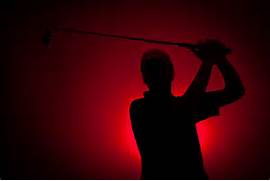BALL FLIGHT
Reading and managing a golf ball’s flight through manipulation of golf swing principles is an interesting challenge and learning opportunity for every golfer. John Jacobs, Practical Golf, offers, “The only purpose of a golf swing is to move the club through the ball square to the target at maximum speed.”
There are five ball flight laws that control a golf ball’s flight: clubface angle, clubface path, the angle of the club’s approach to the ball, the centeredness of impact of the ball with the clubface and the speed of the clubface at impact. The two primary variables that control ball flight direction are clubface angle and clubface path. Clubface angle at impact controls 85% of golf ball flight and 15% of golf ball flight is controlled by clubface path at impact. This offers a clear message: if the desire is to control ball flight, work on managing clubface angle first.
Clubface path at impact, the initial ball flight direction, can be inside-out, straight or outside-in to the ball-target line. Clubface angle at impact, the secondary ball flight direction, can be closed, square or open to the ball-target line. Together, clubface angle and clubface path result in nine different ball flights for right-handed golfers that can be read and managed:
- Inside-out path, closed clubface…push-draw
- Inside-out path, square clubface…push
- Inside-out path, open clubface…push-fade
- Straight path, closed clubface…straight-draw
- Straight path, square clubface…straight
- Straight path, open clubface…straight-fade
- Outside-in path, closed clubface…pull-draw
- Outside-in path, square clubface…pull
- Outside-in path, open clubface…pull-fade
Grip[1], aim[2], position[3], swing plane[4] and release[5] are the primary principles (main causes) that can be used to manage clubface angle and clubface path. The only missing ingredient is time on the range hitting balls to learn to read ball flight and experiment with and manage the club-ball impact variables. Jack Nicklaus, Golf My Way, contends, “Whatever any golfer does with a golf club should have only one purpose: to produce correct impact of club on ball.”
[1] The placement of the hands on the club: positioning the palms, fingers and thumbs to allow a fluid motion during the swing.
[2] The combination of alignments of the clubface and body in relation to the target.
[3] The relationship of the back of the leading hand and the forearm: flat, cupped or arched-bowed.
[4] The tilt and direction of travel of the inclined plane that is made by the shaft of the club as it moves through the backswing and the downswing.
[5] The movement of the body that returns the clubface to a square position at impact in the forward swing, freeing potential energy in the moving clubhead.


